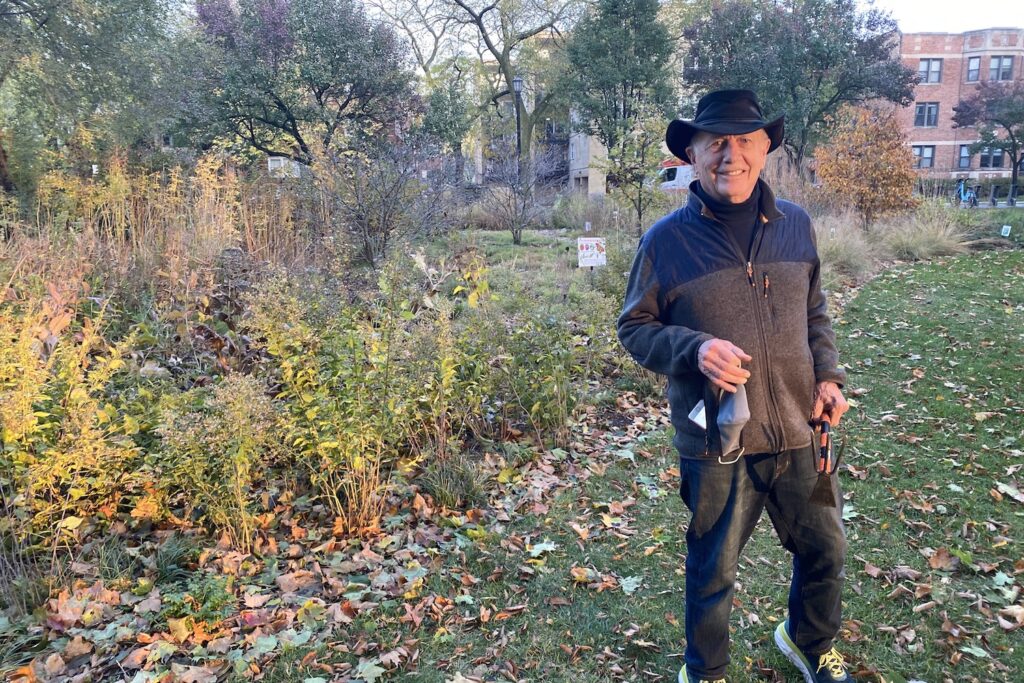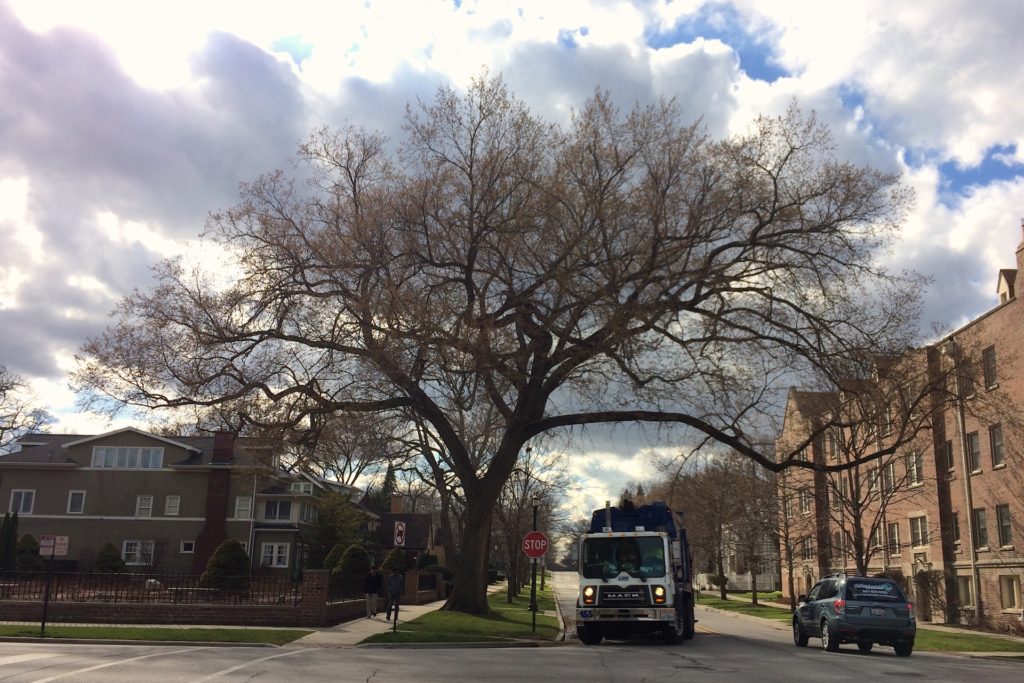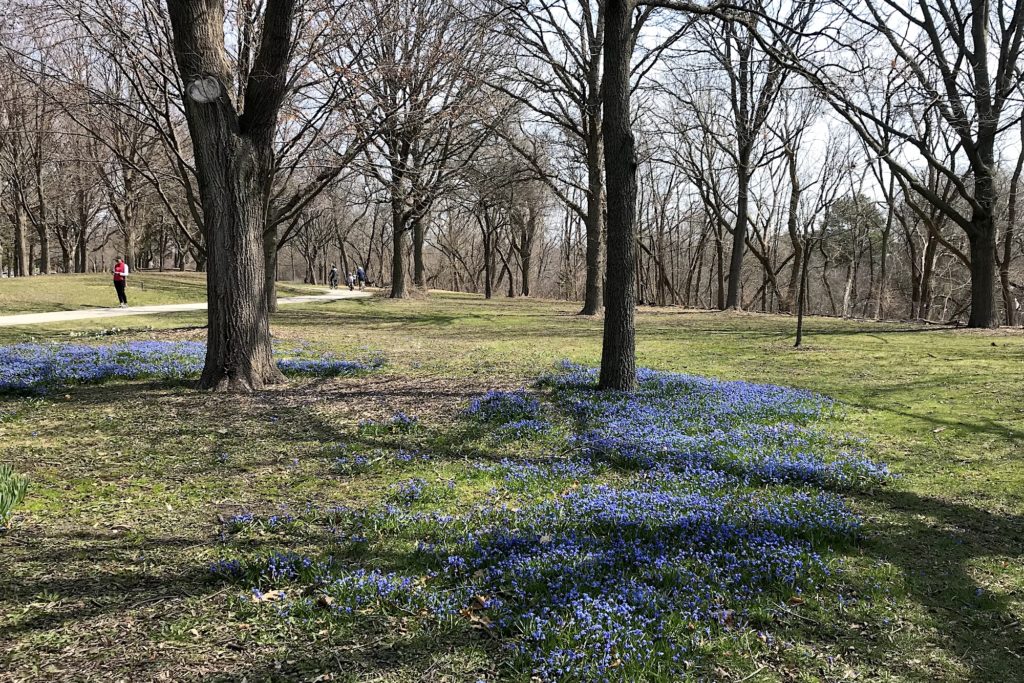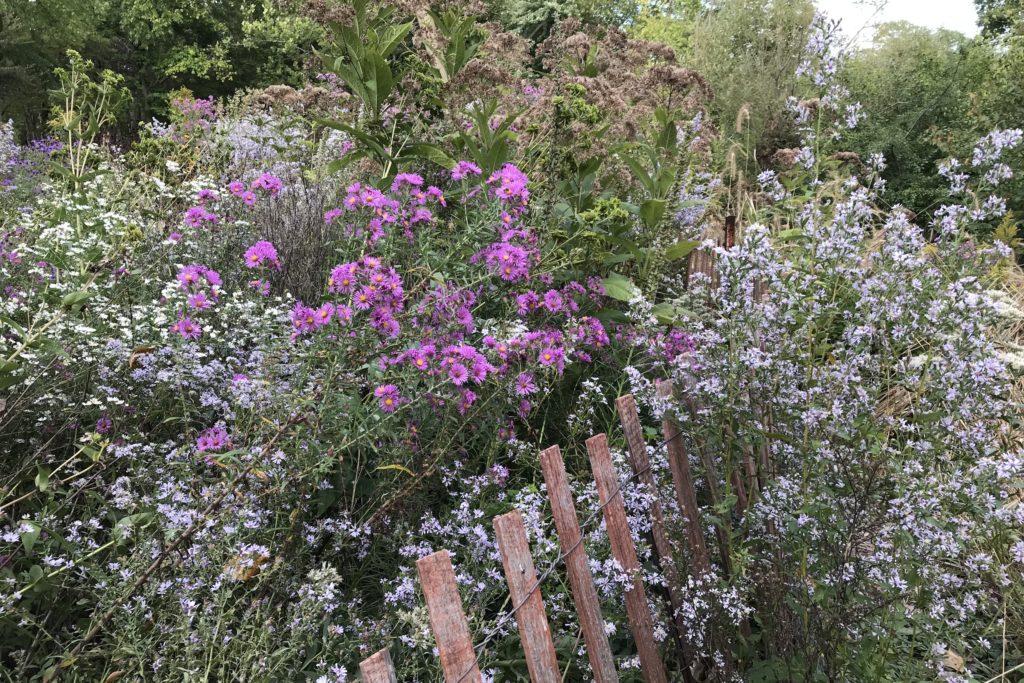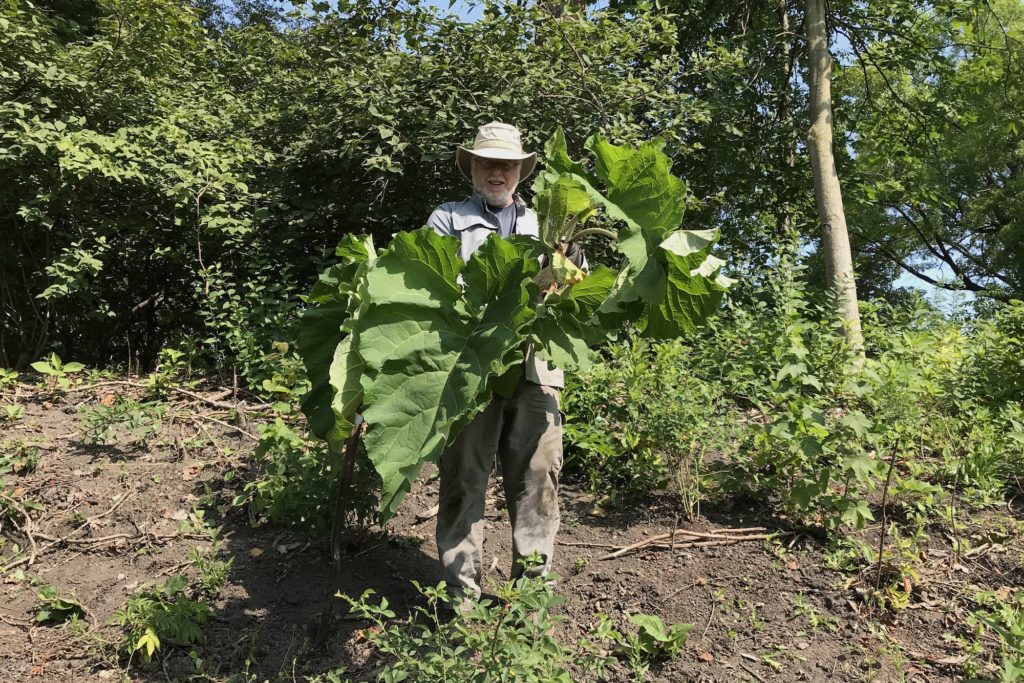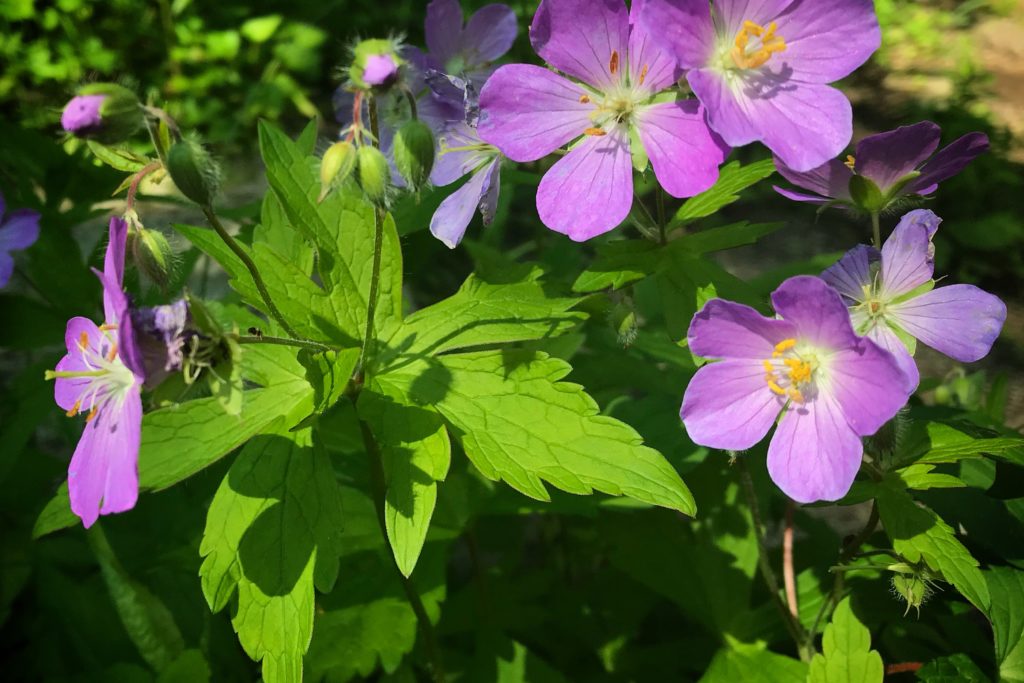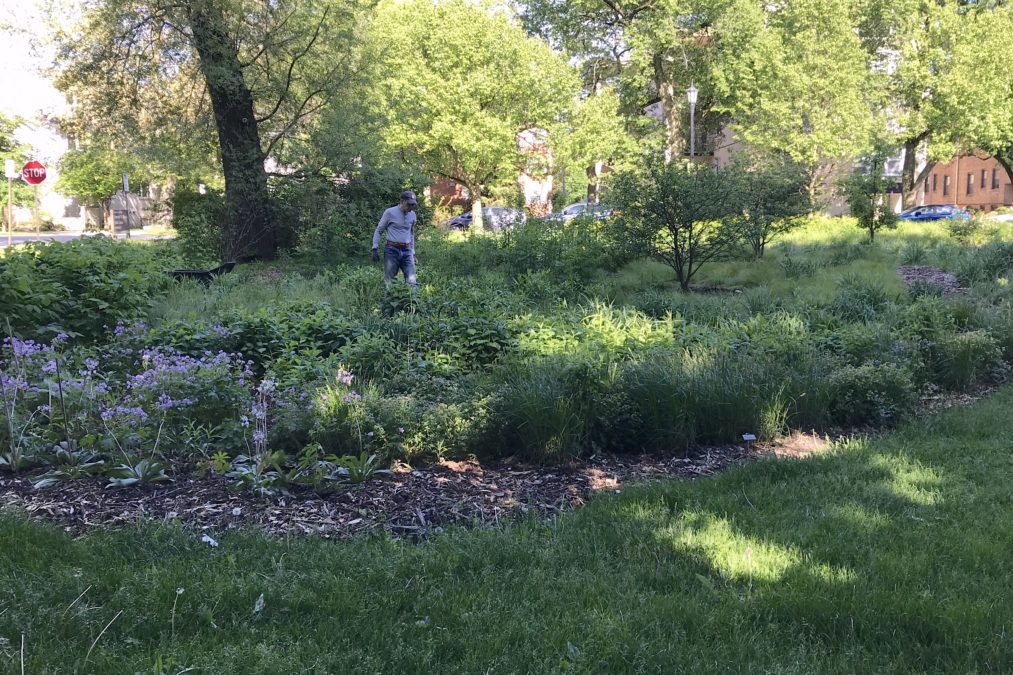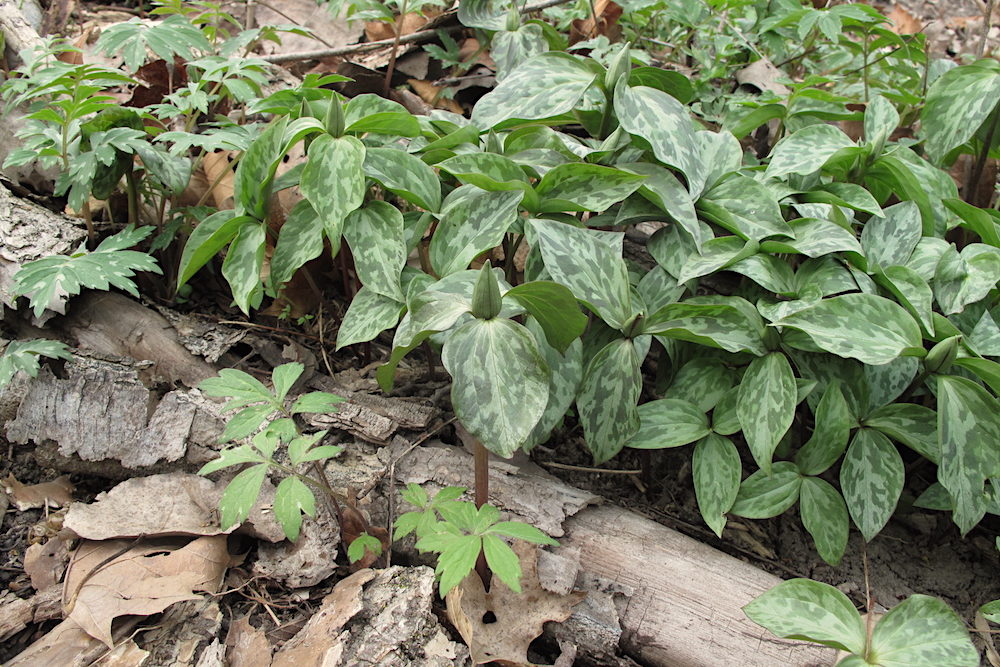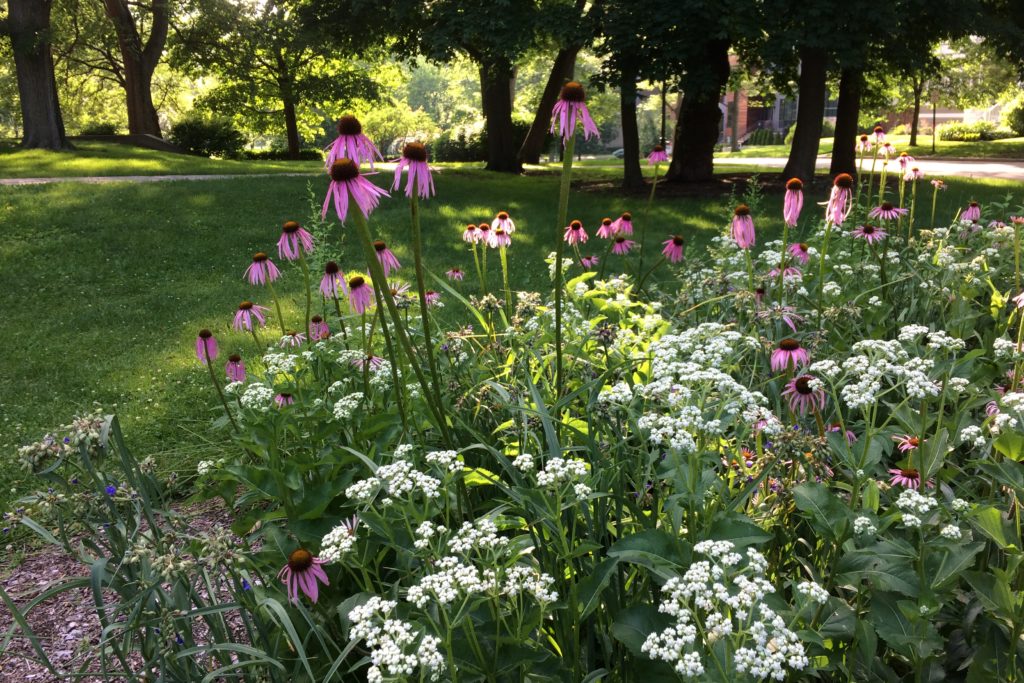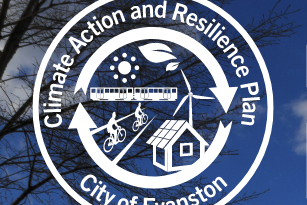The City of Evanston and community volunteers are working to restore and care for natural habitat along sections of the North Shore Channel — a blue-green corridor two miles from Lake Michigan on the city’s west side. Together, we are improving these lands for birds, bees, butterflies — and people.
The City of Evanston and community volunteers are working to restore and care for natural habitat along sections of the North Shore Channel — a blue-green corridor two miles from Lake Michigan on the city’s west side. Together, we are improving these lands for birds, bees, butterflies — and people.
About the North Shore Channel Habitat Project
Our work grows out of a long-standing commitment to conservation by the City of Evanston and the community. In 1960, public officials had the foresight to secure long-term leases of channel lands from the Metropolitan Water Reclamation District, which owns them. A 1972 plan envisioned a "channel lands greenbelt."
Over time these lands have become an important corridor for migratory birds and other wildlife. Volunteers at the Ladd Arboretum and other channelside sites are committed to carrying on this legacy and preserving and improving these lands for generations to come.
Support for work at the Ladd Arboretum has come from the National Fish and Wildlife Foundation’s Chi-Cal Rivers Fund, Illinois Clean Energy Foundation, Evanston Environmental Association, and private donors. We are also grateful for the partnership of Climate Action Evanston and its Natural Habitat Evanston program, Friends of the Chicago River, and stewards of the Harbert-Payne Park natural area and Lorraine Morton Civic Center Habitat Garden.
Over time these lands have become an important corridor for migratory birds and other wildlife. Volunteers at the Ladd Arboretum and other channelside sites are committed to carrying on this legacy and preserving and improving these lands for generations to come.
Support for work at the Ladd Arboretum has come from the National Fish and Wildlife Foundation’s Chi-Cal Rivers Fund, Illinois Clean Energy Foundation, Evanston Environmental Association, and private donors. We are also grateful for the partnership of Climate Action Evanston and its Natural Habitat Evanston program, Friends of the Chicago River, and stewards of the Harbert-Payne Park natural area and Lorraine Morton Civic Center Habitat Garden.
About the North Shore Channel Habitat Project
Our work grows out of a long-standing commitment to conservation by the City of Evanston and the community. In 1960, public officials had the foresight to secure long-term leases of channel lands from the Metropolitan Water Reclamation District, which owns them. A 1972 plan envisioned a "channel lands greenbelt."
Over time these lands have become an important corridor for migratory birds and other wildlife. Volunteers at the Ladd Arboretum and other channelside sites are committed to carrying on this legacy and preserving and improving these lands for generations to come.
Support for work at the Ladd Arboretum has come from the National Fish and Wildlife Foundation’s Chi-Cal Rivers Fund, Illinois Clean Energy Foundation, Evanston Environmental Association, and private donors. We are also grateful for the partnership of Climate Action Evanston and its Natural Habitat Evanston program, Friends of the Chicago River, and stewards of the Harbert-Payne Park natural area and Lorraine Morton Civic Center Habitat Garden.
Over time these lands have become an important corridor for migratory birds and other wildlife. Volunteers at the Ladd Arboretum and other channelside sites are committed to carrying on this legacy and preserving and improving these lands for generations to come.
Support for work at the Ladd Arboretum has come from the National Fish and Wildlife Foundation’s Chi-Cal Rivers Fund, Illinois Clean Energy Foundation, Evanston Environmental Association, and private donors. We are also grateful for the partnership of Climate Action Evanston and its Natural Habitat Evanston program, Friends of the Chicago River, and stewards of the Harbert-Payne Park natural area and Lorraine Morton Civic Center Habitat Garden.
Volunteers are working to clear invasives and plant and manage native trees, shrubs, flowers, and grasses at several Evanston natural areas. Sites on this map were part of the 2016-20 North Shore Channel Habitat Project. Others include the Clark Street Beach Bird Sanctuary and Perkins Woods.
1. The Ladd Arboretum
Volunteers are working primarily in the area between Bridge Street and Green Bay Road.
2. Twiggs Park
Across the channel from the arboretum, a small patch of native plants can be seen from an observation deck overlooking the water.
3. Harbert-Payne Park
On the east bank of the channel between Dempster and Main Street, volunteers are improving habitat in a wooded area on the south end of the park.
4. The Morton Civic Center Habitat Garden
A highly visible demonstration of the City’s commitment to conservation and climate resilience, with more than 60 species of native plants.
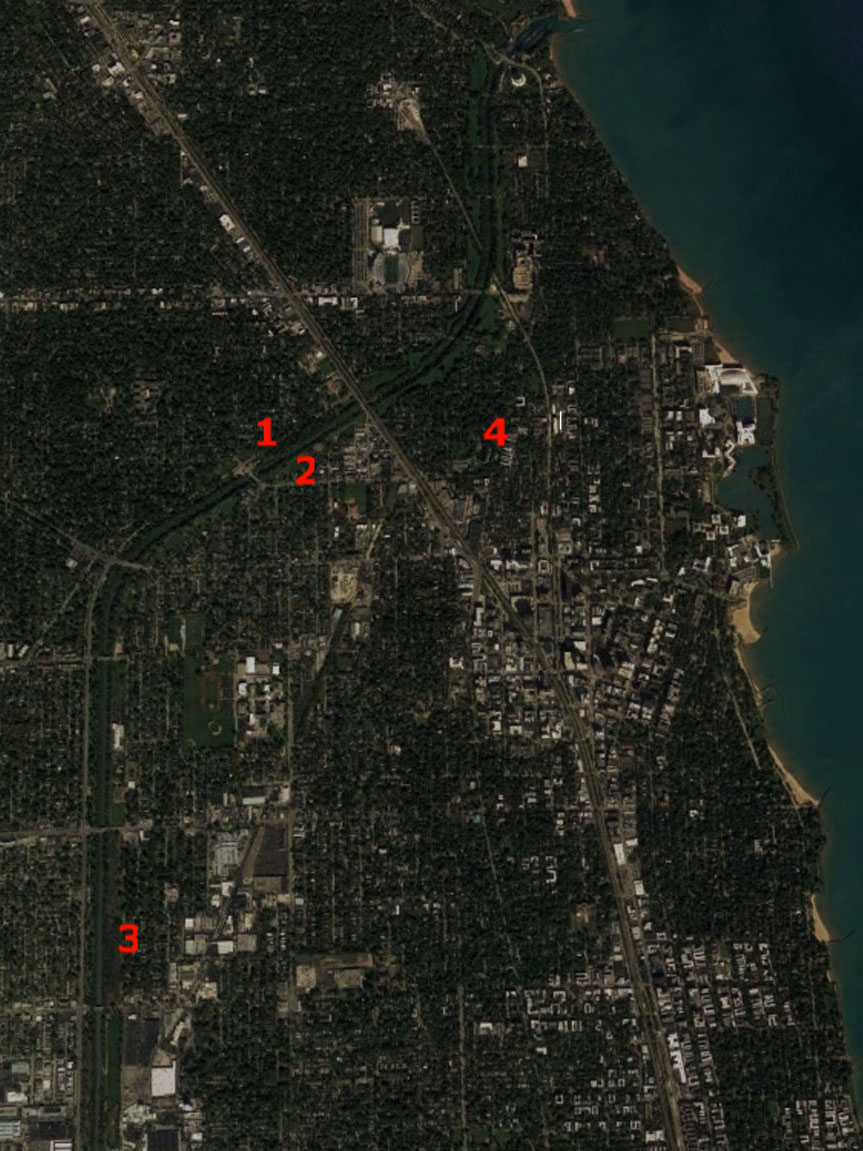
Volunteers are working to clear invasives and plant and manage native trees, shrubs, flowers, and grasses at several Evanston natural areas. Sites on this map were part of the 2016-2020 North Shore Channel Habitat Project. Others include the Clark Street Beach Bird Sanctuary and Perkins Woods.
1. The Ladd Arboretum
Volunteers are working primarily in the area between Bridge Street and Green Bay Road.
2. Twiggs Park
Across the channel from the arboretum, a small patch of native plants can be seen from an observation deck overlooking the water.
3. Harbert-Payne Park
On the east bank of the channel between Dempster and Main Street, volunteers are improving habitat in a wooded area on the south end of the park.
4. The Morton Civic Center Habitat Garden
A highly visible demonstration of the City’s commitment to conservation and climate resilience, with more than 60 species of native plants.
North Shore Channel Habitat Walk
Take a walk along the channel, beginning near the Evanston Ecology Center, 2024 McCormick Boulevard. This guide will introduce you to the natural and human history of this section of the North Shore Channel. Even if you’ve visited before, you’ll learn more about the area and the habitat restoration work now underway.
North Shore Channel Habitat Walk
Take a walk along the channel, beginning near the Evanston Ecology Center, 2024 McCormick Boulevard. This guide will introduce you to the natural and human history of this section of the North Shore Channel. Even if you’ve visited before, you’ll learn more about the area and the habitat restoration work now underway.
Plant Lists
Meet the native plants we are using to restore healthy habitat at project sites. These lists will give you more detailed information.
Civic Center Habitat Garden | Plants by Season
Civic Center Habitat Garden | Plants by Season
Plant Lists
Meet the native plants we are using to restore healthy habitat at project sites. These lists will give you more detailed information.
Civic Center Habitat Garden | Plants by Season
Civic Center Habitat Garden | Plants by Season
Get Involved
Community volunteers and city staff are working together to care for several channelside sites and other natural areas around Evanston.
During the growing season, volunteers monitor plantings, weed, and water. During cold weather, we clear invasives like buckthorn. Along the way, there are opportunities to learn and get to know neighbors while working together.
Would you like to help? Get in touch with us at evanstonhabitat [at] gmail.com to volunteer at the Ladd Arboretum. To volunteer at Harbert Park, contact harbertvolunteers [at] naturalhabitatevanston.org.
You can also get in touch directly with stewards of the Clark Street Beach Bird Sanctuary, Perkins Woods, and Lovelace Park if you're interested in working there.
During the growing season, volunteers monitor plantings, weed, and water. During cold weather, we clear invasives like buckthorn. Along the way, there are opportunities to learn and get to know neighbors while working together.
Would you like to help? Get in touch with us at evanstonhabitat [at] gmail.com to volunteer at the Ladd Arboretum. To volunteer at Harbert Park, contact harbertvolunteers [at] naturalhabitatevanston.org.
You can also get in touch directly with stewards of the Clark Street Beach Bird Sanctuary, Perkins Woods, and Lovelace Park if you're interested in working there.
In the above photo, volunteers finish planting at the Ladd Arboretum, May 2018.
Get Involved
Community volunteers and city staff are working together to care for several channelside sites and other natural areas around Evanston.
During the growing season, volunteers monitor plantings, weed, and water. During cold weather, we clear invasives like buckthorn. Along the way, there are opportunities to learn and get to know neighbors while working together.
Would you like to help? Get in touch with us at evanstonhabitat [at] gmail.com to volunteer at the Ladd Arboretum. To volunteer at Harbert Park, contact harbertvolunteers [at] naturalhabitatevanston.org.
You can also get in touch directly with stewards of the Clark Street Beach Bird Sanctuary, Perkins Woods, and Lovelace Park if you're interested in working there.
During the growing season, volunteers monitor plantings, weed, and water. During cold weather, we clear invasives like buckthorn. Along the way, there are opportunities to learn and get to know neighbors while working together.
Would you like to help? Get in touch with us at evanstonhabitat [at] gmail.com to volunteer at the Ladd Arboretum. To volunteer at Harbert Park, contact harbertvolunteers [at] naturalhabitatevanston.org.
You can also get in touch directly with stewards of the Clark Street Beach Bird Sanctuary, Perkins Woods, and Lovelace Park if you're interested in working there.
In the above photo, volunteers finish planting at the Ladd Arboretum, May 2018.
What's New
- All
- Caring for plants
- Community
- Health
- Invasive clearing
- Native plants
- Planning
- Planting
- Trees
- Wildlife
Looking at the world from the plant’s point of view
It’s often good to approach plant habits from their point of view instead of from ours. Why does a plant act in a certain way? Ferns, for instance, will often shed old fronds when new ones emerge. These dead fronds lie in a heap at their base. This...
4 years ago
Take care of trees—and they’ll take care of us
While we are staying close to home and outdoor volunteer opportunities are limited, there is still plenty to do to help Evanston’s urban forest. What’s the urban forest? Basically, it’s everything green and growing in a city. It i...
4 years ago
Seeking out nature in a time of stress
Stress levels are high this spring. But while we have to keep a healthy distance, Evanston’s parks remain open, and people are seeking them out. It’s no wonder. There is increasing evidence that green spaces and natural areas like the Lad...
4 years ago
Floppy prairie plants
Prairie plants are often tall and floppy—a tendency that's more obvious when they're growing in a garden. Why did they evolve this way?...
5 years ago
Opening space for growth
We spend more time removing plants than adding them these days. In a disturbed site like the banks of the North Shore Channel, invasive plants thrive. Until our newly planted native plants get the upper hand, weeding will remain one of our most tim...
5 years ago
Ephemeral
Mayapples have wilted in July’s heat, bringing to a close the season of spring ephemerals. In the Ladd Arboretum, prairie plants are now towering, and plants like these retreat until next spring. Top to bottom: sharp-lobed hepatica, birdfoot vi...
5 years ago
What a difference two years make
The Civic Center Habitat Garden marked its second anniversary this month. What started out as a weedy lawn has been transformed through good planning and hard work into a flourishing oasis for birds and pollinators. More than sixty species of plants ...
5 years ago
Hidden under the buckthorn
As dense buckthorn is cleared from the banks of the North Shore Channel, other plants have a better chance. These prairie trilliums showed up recently in one of the recently cleared areas...
5 years ago
Load More
Fail to load posts. Try to refresh page.
What's New
- All
- Caring for plants
- Community
- Health
- Invasive clearing
- Native plants
- Planning
- Planting
- Trees
- Wildlife
Looking at the world from the plant’s point of view
It’s often good to approach plant habits from their point of view instead of from ours. Why does a plant act in a certain way? Ferns, for instance, will often shed old fronds when new ones emerge. These dead fronds lie in a heap at their base. This...
4 years ago
Take care of trees—and they’ll take care of us
While we are staying close to home and outdoor volunteer opportunities are limited, there is still plenty to do to help Evanston’s urban forest. What’s the urban forest? Basically, it’s everything green and growing in a city. It i...
4 years ago
Seeking out nature in a time of stress
Stress levels are high this spring. But while we have to keep a healthy distance, Evanston’s parks remain open, and people are seeking them out. It’s no wonder. There is increasing evidence that green spaces and natural areas like the Lad...
4 years ago
Floppy prairie plants
Prairie plants are often tall and floppy—a tendency that's more obvious when they're growing in a garden. Why did they evolve this way?...
5 years ago
Opening space for growth
We spend more time removing plants than adding them these days. In a disturbed site like the banks of the North Shore Channel, invasive plants thrive. Until our newly planted native plants get the upper hand, weeding will remain one of our most tim...
5 years ago
Ephemeral
Mayapples have wilted in July’s heat, bringing to a close the season of spring ephemerals. In the Ladd Arboretum, prairie plants are now towering, and plants like these retreat until next spring. Top to bottom: sharp-lobed hepatica, birdfoot vi...
5 years ago
What a difference two years make
The Civic Center Habitat Garden marked its second anniversary this month. What started out as a weedy lawn has been transformed through good planning and hard work into a flourishing oasis for birds and pollinators. More than sixty species of plants ...
5 years ago
Hidden under the buckthorn
As dense buckthorn is cleared from the banks of the North Shore Channel, other plants have a better chance. These prairie trilliums showed up recently in one of the recently cleared areas...
5 years ago
Visualize green
With landscapes drained of color and temperatures plummeting, this is an ideal time to start planning for spring....
6 years ago
Climate action from the ground up
Evanston City Council voted unanimously to adopt an ambitious Climate Action & Resilience Plan that makes Evanston the first city in Illinois to commit to achieving carbon neutrality. ...
6 years ago
Load More
Fail to load posts. Try to refresh page.
